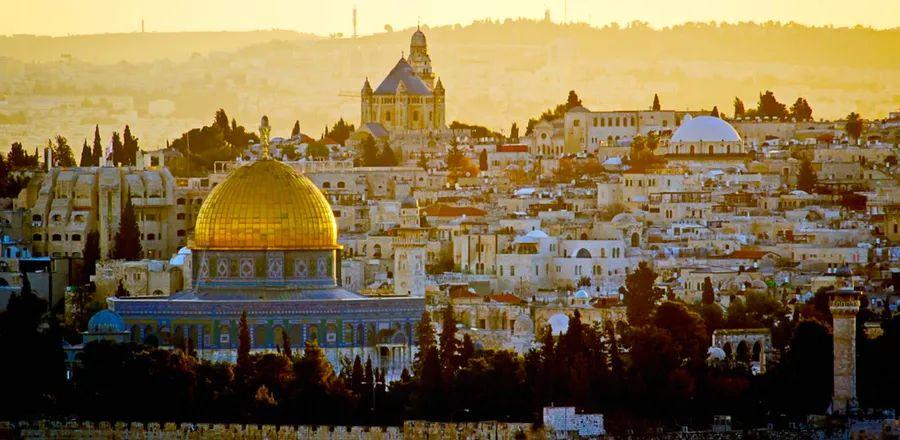Discover the World’s Most Endangered UNESCO Sites and How You Can Contribute to Their Preservation

The Taj Mahal, Cinque Terre, and Yellowstone National Park are just a few of the renowned locations on the United Nations Educational, Scientific, and Cultural Organization (UNESCO) World Heritage List. This list features 1,199 significant natural and cultural landmarks from 195 countries worldwide, all deemed to hold universal importance and satisfying at least one of UNESCO’s 10 selection criteria, such as showcasing unique aspects of a civilization or illustrating vital ecological processes.
In 2022, UNESCO identified climate change as the primary threat to natural World Heritage sites. The organization reported that climate change has already adversely affected 34 percent of these sites.
Yet, climate change is not the sole danger. UNESCO also keeps a list of World Heritage sites that are at risk.
The Most Endangered UNESCO World Heritage Sites
As stated in Article 11 of the UNESCO World Heritage Convention, sites can be added to the in-danger list if they are threatened by factors such as rapid urbanization, tourism development, land degradation, or the potential for armed conflict. Currently, the list features 56 World Heritage sites.
Here are some notable examples that illustrate the various risks leading to a site’s placement on the watch list. While UNESCO accepts general donations for the protection of World Heritage sites, many of the sites listed as in danger also welcome individual contributions.
Old City of Jerusalem and Its Surrounding Walls
Jerusalem holds profound significance for Judaism, Christianity, and Islam as the location of pivotal events in each faith's history. This ancient city was designated a UNESCO World Heritage site in 1981 and encompasses landmarks such as the Wailing Wall, the Church of the Holy Sepulchre, and the Dome of the Rock.
A year after its designation, Jerusalem was placed on the in-danger list due to several factors, including the deterioration of its monuments and the effects of archaeological digs.

Photo by Marian Galovic/Shutterstock
Virunga National Park, located in the Democratic Republic of the Congo
Support: Virunga National Park
Designated as a UNESCO World Heritage site in 1979, Virunga National Park sits in the eastern part of the Congo Basin and is home to over 1,000 species, including one-third of the world's endangered mountain gorillas. Sadly, the park was placed on UNESCO's in-danger list in 1994 as a consequence of the Rwandan genocide. The influx of refugees into the Democratic Republic of the Congo led to severe deforestation and poaching, which continue to pose threats to the park today.

Photo by Brian Lasenby/Shutterstock
Everglades National Park, located in the United States
Support: Everglades National Park
Florida’s Everglades National Park is the largest subtropical wilderness area in the country and has held the designation of a UNESCO World Heritage site since 1979. In 1993, it was placed on the in-danger list due to the devastation from Hurricane Andrew but was removed in 2007. However, it was reinstated on the list in 2010 because of ongoing concerns regarding the degradation of its aquatic ecosystems.
The deterioration of its ecosystem has been linked to issues such as pollution, decreased water levels due to surrounding agricultural practices, a decline in marine and estuarine biodiversity, and alterations in the volume of water flow.

Photo by Mistervlad/Shutterstock
Historic Centre of Vienna, Austria
With its rich history as the capital of the Austro-Hungarian Empire and its contemporary status as Europe’s music capital, Vienna showcases remnants from the Middle Ages, the baroque era, and the Gründerzeit period throughout its streets.
The Historic Centre of Vienna was added to the World Heritage List in 2001 for its remarkable architectural gems from various eras, including baroque palaces and the renowned ring road. However, in 2017, UNESCO placed this site on the in-danger list due to new high-rise developments that negatively affect the site's outstanding universal value.

Photo by Matyas Rehak/Shutterstock
Chan Chan Archaeological Zone, Peru
Chan Chan served as the capital of the ancient Chimu Kingdom, which flourished for nearly five centuries before being conquered by the Incas in the 15th century. This archaeological zone, spanning approximately 5.5 square miles, highlights a portion of what was once the largest city built with earthen architecture in pre-Columbian America and showcases the kingdom’s advanced systems of industry, agriculture, and water management.
In 1986, the same year Chan Chan was recognized as a UNESCO World Heritage site, it was also placed on the in-danger list due to its vulnerability: the site's structures are easily damaged by air and water. Additionally, UNESCO reports that human activities, particularly illegal farming and infrastructure expansion, pose significant threats to the visual integrity of the site.

Photo by klublu/Shutterstock
Niokolo-Koba National Park
Designated as a UNESCO World Heritage site in 1981, Senegal’s Niokolo-Koba National Park boasts a variety of ecosystems, including gallery forests (which thrive along rivers or wetlands in otherwise arid areas) and herbaceous savanna floodplains. Spanning around 3,500 square miles, the park hosts over 70 mammal species—including the Derby eland, the largest antelope in the world—and 1,500 different plant species.
Niokolo-Koba National Park was placed on the in-danger list due to multiple threats, including poaching, bushfires, and the rise of agricultural activities within the park.
This article first appeared online in 2022 and was updated on November 21, 2023, to reflect the latest information.
Evaluation :
5/5



